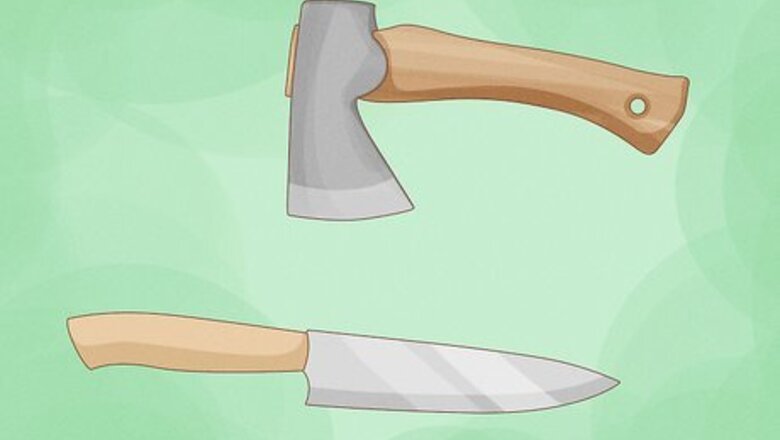
views
Cutting the Sugar Cane
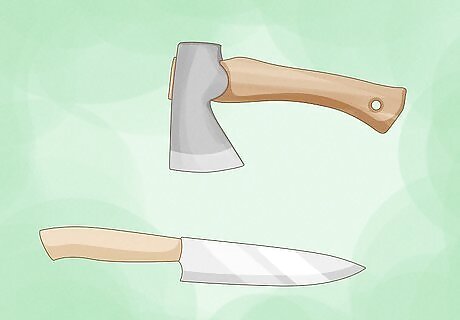
Choose a cutting blade. Before cutting sugar cane, you'll need a blade. Sugar cane is strong, so a sharp cutting blade is necessary to trim the crop. A sharp knife or a hand axe is sharp enough to harvest sugar cane. However, due to their small size, they may not trim sugar cane as fast as other options. A large cutting blade, which you can purchase at a local hardware store, is probably your best choice. While it can be large and somewhat difficult to handle, it can most efficiently cut down sugar cane. If you're not used to handling large objects, however, you may want to stick to something smaller over a cutting blade. You do not want to risk hurting yourself when harvesting sugar cane.

Cut the cane close to the ground. Sugar cane must be trimmed close to the ground. You'll want to cut down the entire shoot for harvest. Cut the blade close to the ground. If using a knife or hatchet, you may have to crouch down near the root to cut the sugar cane. Do not make hacking motions when cutting. Gently saw at the sugar cane instead. While you should cut close to the ground, do not cut into the root. Make sure to cut above the ground without sawing into the ground or dirt below the sugar cane plant.
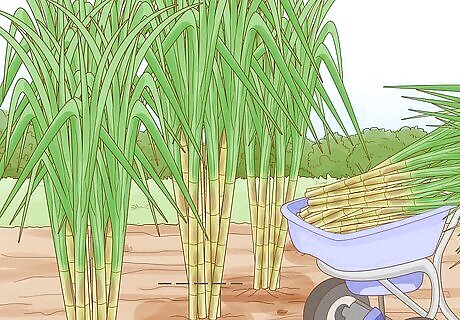
Store safely as you cut. As you cut your shoots, make sure to store them safely. You should have something like a wheel barrow or other transportation device nearby. As you cut, place the severed shoots in this device. While harvesting, it is okay to stack your sugar cane shoots on top of each other.

Strip off excess leaves from the shoots. You really only need the green shoot portion of the sugar cane. After cutting down your leaves, you should strip the cane of any excess leaves or other foliage. Sugar cane plants may have small leaves growing off the sides. These should be removed after you harvest the sugar cane. You may be able to remove some leaves with your hands. If leaves are tough to remove, use a blade. It's a good idea to use a smaller blade, like a knife, over a large cutting blade as you'll end up having more control.
Completing the Harvesting Process
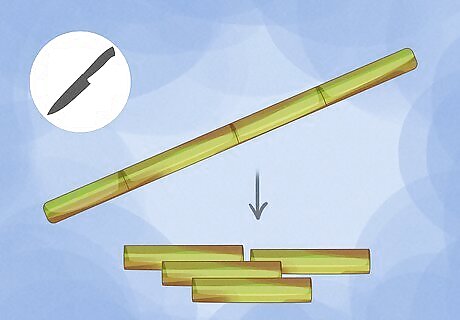
Trim down the shoots into manageable chunks. Once you've cut down the shoots and trimmed off excess leaves, you can cut the shoots into manageable chunks. Sugar cane plants are tall, growing up to 10 feet. In order to transport sugar cane, you should saw down the shoots into smaller portions. Cut the cane down into small enough portions that you can transport it easily using your chosen transportation device.
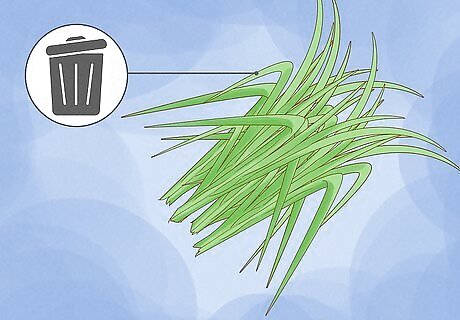
Dispose of the excess leaves. After harvesting sugar cane, you'll be left with excess leaves from the shoots. You should dispose of these properly. You can transport them to a local dump or place them in a dumpster near you. In some areas, excess leaves are burned in a controlled fire after harvest. You can also lay the leftover leaves over the roots. This forms a mulch that keeps the roots safe from moisture, prevents soil erosions, and stops weeds from growing over your sugar cane.
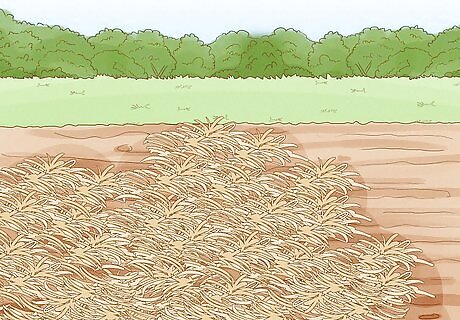
Make sure the roots are protected. Once you've finished harvesting sugar cane, you want to make sure the leftover roots are protected. This will assure a quality sugar cane crop will grow the following year. You can throw excess leaves over the stumps or add a layer of straw to the ground. This is especially important if you harvested your crops near wintertime. Roots need protection from the coming frost and cold in order to thrive.
Assuring Quality Crops
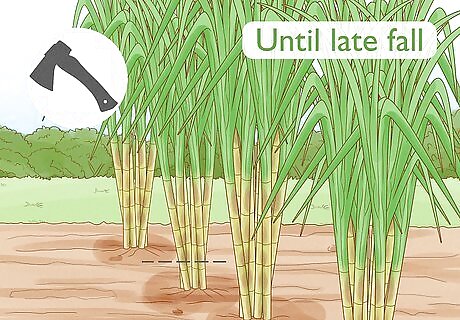
Harvest sugar cane at the right time. You want to make sure you harvest sugar cane during the right times of year. During certain periods, sugar cane is more likely to be strong and ready to harvest. For best results, you should hold off on harvesting your sugar cane until late fall. At this point, the shoots should be tall and strong enough to cut down.
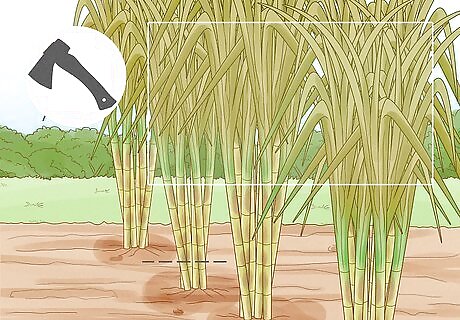
Observe the shoots to make sure they're ready to harvest. Some shoots may take longer to grow than others. Starting in early fall, observe the shoots. Hold off on harvesting until they all display signs they're healthy and ready to trim. Check the leaves. Leaves that appear yellowish and slightly dry are ready to harvest. Tap the cane with your hand. It should make a metallic sound if it's ready to harvest. If you're still unsure, make a small sideways cut in the cane. Turn the cut towards the sun. The inside of the plant should glisten slightly if it's ready to harvest.
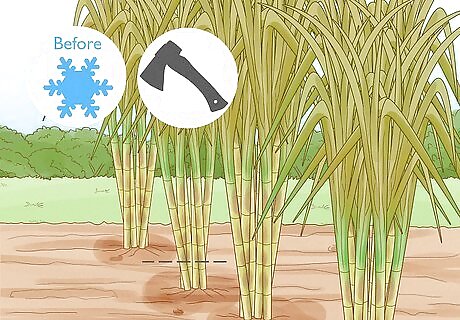
Make sure you harvest sugar cane before frost sets in. Do not wait too late in fall to harvest sugar cane. If you harvest the plant after frost has set in, a lot of the plant will have spoiled. Make sure you watch the weather forecast and get to harvesting the crop before the first snow or below freezing temperature of the year.

Check regulations if you plan to burn excess leaves. If you plan on burning sugar cane leaves after harvest, check regulations in your area. Not all states will allow you to burn plants on your property. You can check with your local Department of Natural Resources to see if it's legal to burn excess leaves in your area. If there are regulations forbidding this, you should find another way to dispose of excess leaves.












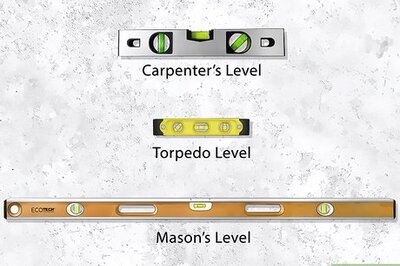


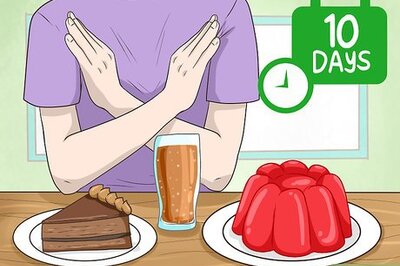




Comments
0 comment